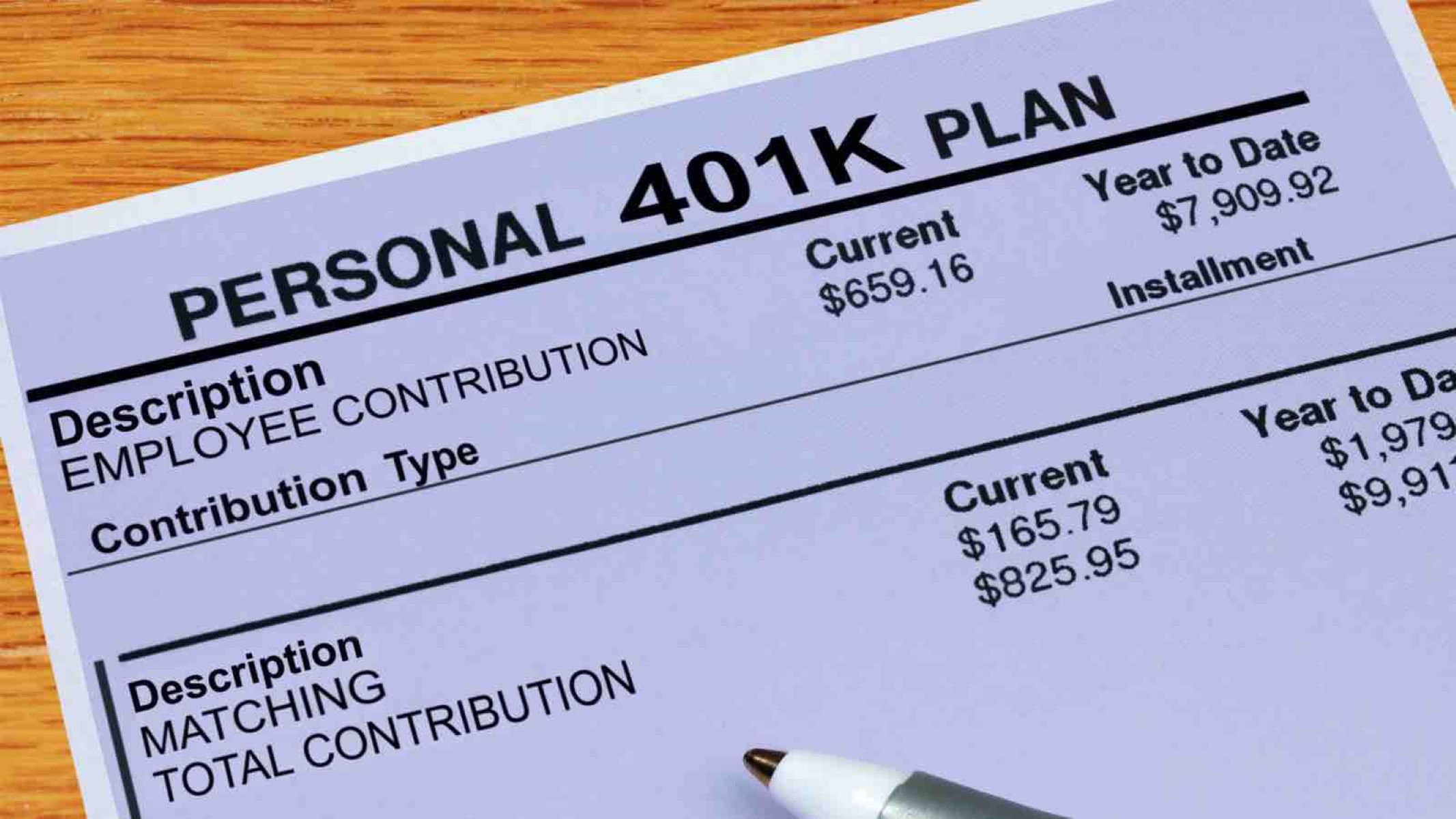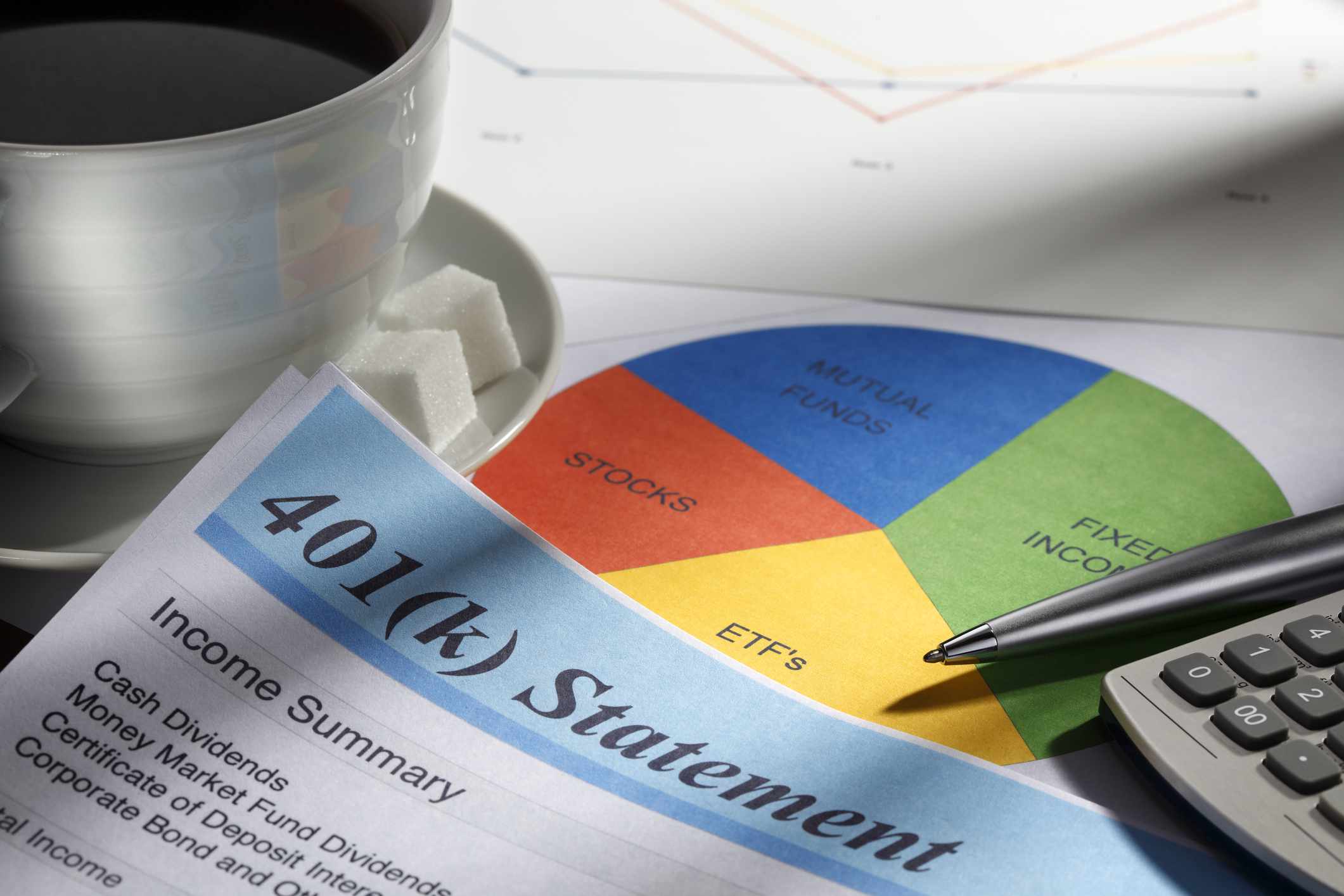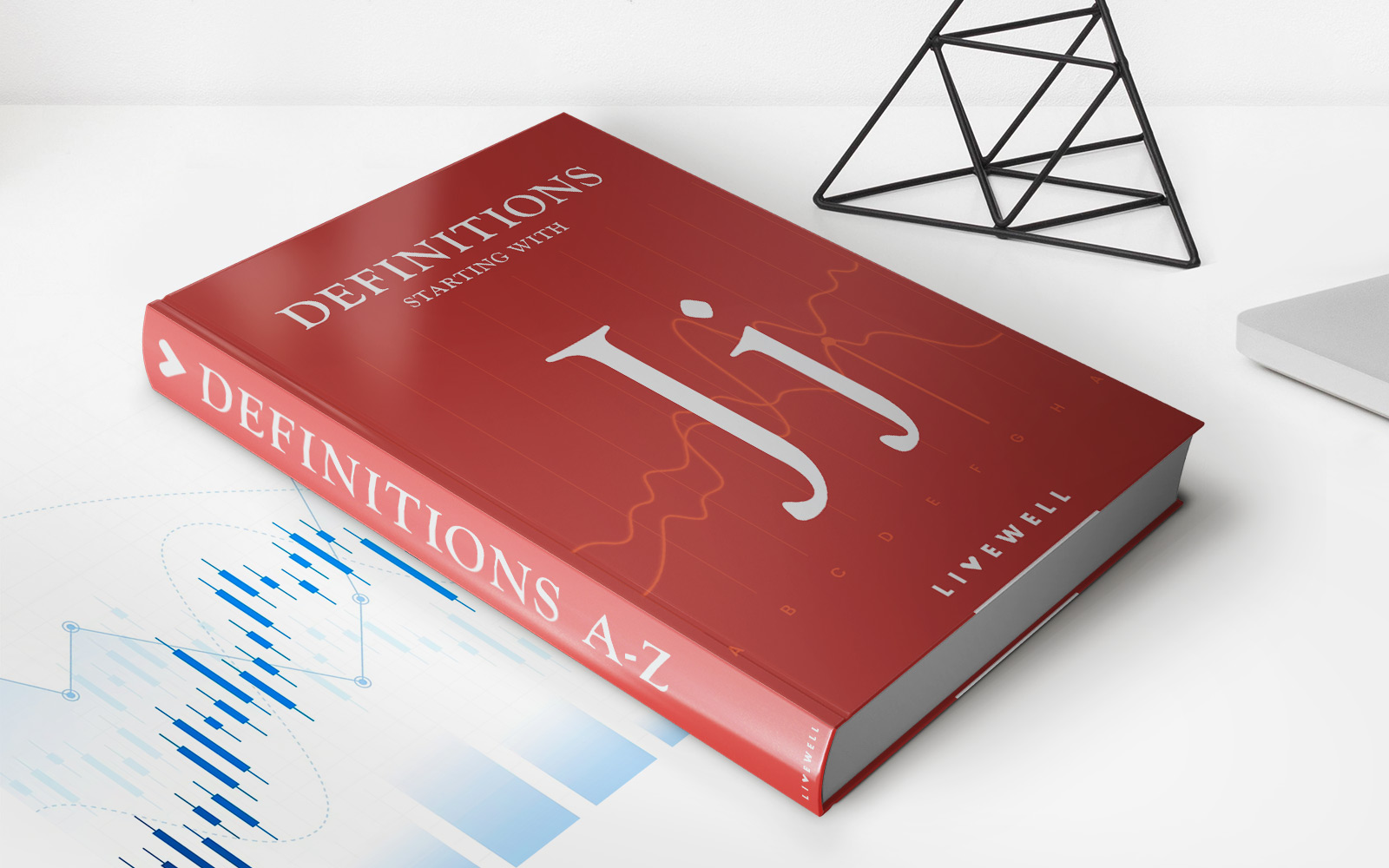

Finance
How Does Your 401K Work When You Retire
Published: October 17, 2023
Discover how your 401K works when you retire and ensure your financial security. Get expert advice on retirement finance and make the most out of your investments.
(Many of the links in this article redirect to a specific reviewed product. Your purchase of these products through affiliate links helps to generate commission for LiveWell, at no extra cost. Learn more)
Table of Contents
- Introduction
- Understanding 401(k) Plans
- Contribution Phase
- Vesting in Your 401(k)
- Investment Options
- Growth of Your 401(k) Over Time
- Retirement Age and Withdrawal Options
- Required Minimum Distributions (RMDs)
- Tax Treatment of 401(k) Distributions
- Managing and Maximizing Your 401(k) During Retirement
- The Role of Social Security in Retirement
- Conclusion
Introduction
Planning for retirement is a crucial aspect of anyone’s financial journey. One popular tool that individuals use to save for retirement is a 401(k) plan. A 401(k) is a tax-advantaged retirement savings account offered by many employers. It allows employees to contribute a portion of their salary to the account, which can then be invested in various financial instruments such as stocks, bonds, or mutual funds.
Understanding how your 401(k) works when you retire is essential to ensure a financially secure future. This article aims to provide a comprehensive overview of how your 401(k) plan functions during your retirement years. From the contribution phase to the withdrawal options and tax implications, we will cover all the important aspects you need to know.
Whether you’re a few years away from retirement or just starting your career, having a clear understanding of your 401(k) will empower you to make informed decisions and maximize your savings for a comfortable retirement lifestyle.
Understanding 401(k) Plans
A 401(k) plan is a type of employer-sponsored retirement savings account that allows individuals to set aside a portion of their pre-tax salary for retirement. These plans are governed by the Internal Revenue Service (IRS) and are subject to certain regulations and contribution limits.
One of the significant advantages of a 401(k) plan is its tax benefits. The money you contribute to your 401(k) is not taxed until you withdraw it during retirement. This means that your contributions are made with pre-tax dollars, reducing your taxable income in the year you contribute.
Furthermore, many employers offer a match on employee contributions, which adds to the attractiveness of these plans. For example, an employer may offer to match 50% of an employee’s contributions up to a certain percentage of their salary. This matching contribution is essentially free money that helps boost your retirement savings.
It’s important to note that 401(k) plans are subject to contribution limits set by the IRS. As of 2021, the maximum contribution limit is $19,500 for individuals under 50 years old. Individuals aged 50 and older can make additional catch-up contributions of up to $6,500, bringing their total annual contribution limit to $26,000.
Another key aspect of 401(k) plans is that they are employer-sponsored. This means that you can only participate in a 401(k) if your employer offers one. Some employers may require employees to be with the company for a specific period before they become eligible to participate in the plan, known as the vesting period. Once you are eligible, you can start contributing to your 401(k) as per the plan’s rules and guidelines.
It’s important to review the plan details provided by your employer to understand important features such as the matching contribution policy, investment options, and any fees associated with the plan. Being informed about these aspects will help you make the most of your 401(k) plan and ensure a secure retirement.
Contribution Phase
The contribution phase of a 401(k) plan is the period during which you actively contribute to your retirement savings account. This phase typically begins when you become eligible to enroll in your employer’s 401(k) plan and ends when you retire or leave the company.
During the contribution phase, you have the opportunity to set aside a portion of your pre-tax salary to contribute to your 401(k) account. The amount you contribute is determined by your personal financial goals and the limits set by the IRS.
Many individuals take advantage of the employer match, if available, to maximize their contributions. Employer matching contributions are essentially free money that can significantly boost your retirement savings. It is vital to take full advantage of this benefit by contributing at least the minimum required to receive the full employer match.
It’s worth noting that the contributions you make to your 401(k) plan are deducted from your gross income, lowering your taxable income for the year. This provides an immediate tax benefit, as you won’t pay income tax on the amount you contribute until you withdraw the funds during retirement.
Keep in mind that there are limits to how much you can contribute to your 401(k) each year. As of 2021, the annual contribution limit is $19,500 for individuals under 50 years old. If you are 50 or older, you can make catch-up contributions of up to $6,500 on top of the regular contribution limit.
It’s important to regularly review and adjust your contribution rate as your financial circumstances change. As you receive salary increases or bonuses, consider increasing your contribution to accelerate your retirement savings. Additionally, you can automate your contributions through payroll deductions, making it easier to consistently save for your retirement.
During the contribution phase, it’s also crucial to diversify your investments within your 401(k) plan. Employers typically offer a range of investment options, such as stocks, bonds, and mutual funds. By diversifying your investments, you spread the risk and increase the potential for long-term growth.
In summary, the contribution phase of a 401(k) plan is a critical time to save for retirement. Make the most of this phase by contributing as much as you can, taking advantage of employer matching contributions, and diversifying your investments for long-term growth.
Vesting in Your 401(k)
Vesting refers to the ownership of employer contributions to your 401(k) plan. When an employer contributes funds to your 401(k) account, whether through matching contributions or profit-sharing, those funds may be subject to a vesting schedule.
A vesting schedule determines how long you need to work for the company before you have complete ownership of the employer contributions. There are two main types of vesting schedules: immediate vesting and graded vesting.
With immediate vesting, you have full ownership of employer contributions from the moment they are made. This means that if your employer offers a matching contribution or profit-sharing, you have immediate access to those funds. Immediate vesting is beneficial as it allows you to take full advantage of the employer contributions without any restrictions.
On the other hand, many employers use a graded vesting schedule, which means that your ownership of the employer contributions increases gradually over time. Typically, a graded vesting schedule has a specific period, often between three to six years, during which your ownership percentage increases. For example, you may be 20% vested after two years, 40% vested after three years, and so on until you reach 100% vested after the specified period.
In cases where you leave the company before becoming fully vested, you will only be entitled to the vested portion of the employer contributions. The non-vested portion, also known as forfeitures, is typically returned to the company and used for other plan participants or plan expenses.
Understanding the vesting schedule of your 401(k) plan is important, as it impacts your retirement savings. If you change jobs frequently or plan to leave your current employer in the near future, it’s essential to consider the vesting schedule when evaluating the employer’s 401(k) benefits.
Keep in mind that your own contributions to the 401(k) are always 100% vested, meaning you have full ownership of those funds regardless of your employment status. Only the employer contributions are subject to vesting.
Knowing the vesting schedule of your 401(k) enables you to make informed decisions about your retirement savings. It’s important to review the details provided by your employer and factor in the vesting schedule when evaluating the overall benefits of your 401(k) plan.
Investment Options
One of the key advantages of a 401(k) plan is the array of investment options it offers. While the specific investment options available may vary depending on your employer, most plans provide a range of choices to suit different risk tolerances and investment goals.
Common investment options within a 401(k) plan include stocks, bonds, mutual funds, target-date funds, and exchange-traded funds (ETFs). Here’s a brief overview of each:
- Stocks: Investing in individual company stocks allows you to own a share of that company’s future earnings. Stocks generally offer higher potential returns but come with increased risk.
- Bonds: Bonds are debt securities issued by corporations, municipalities, or governments. They provide fixed income and are generally considered lower-risk investments compared to stocks.
- Mutual Funds: Mutual funds pool money from multiple investors to invest in a diversified portfolio of stocks, bonds, or both. They offer diversification and professional management.
- Target-Date Funds: These funds are designed to adjust their asset allocation over time based on the target retirement date. They automatically become more conservative as you approach retirement.
- Exchange-Traded Funds (ETFs): Similar to mutual funds, ETFs are traded on stock exchanges and aim to replicate the performance of a specific index or asset class.
When choosing among investment options, it’s essential to consider your risk tolerance, investment goals, and time horizon. Younger investors with a longer time until retirement may prefer more aggressive investment options that offer higher growth potential, while those approaching retirement may lean towards more conservative options that prioritize capital preservation.
It’s important to regularly review and adjust your investment allocations within your 401(k) plan. As your financial goals and market conditions change, you may need to rebalance your portfolio to maintain an appropriate level of risk and align with your objectives.
Keep in mind that some 401(k) plans may also offer a brokerage window or self-directed brokerage account, allowing participants to invest in individual securities or alternative assets beyond the predefined options. This provides additional flexibility for those who want more control over their investment choices.
Before making any investment decisions, it’s always a good idea to consult with a financial advisor who can provide personalized advice based on your specific circumstances.
Overall, the investment options within your 401(k) plan play a significant role in determining the growth and performance of your retirement savings. Understanding these options and making informed decisions can help you build a well-diversified portfolio that aligns with your risk tolerance and long-term goals.
Growth of Your 401(k) Over Time
One of the primary benefits of a 401(k) plan is the potential for your savings to grow over time. As you contribute regularly and invest your funds wisely, your 401(k) has the opportunity to grow through the power of compound interest and market returns.
Compound interest is the concept of earning interest not only on your initial contributions but also on the accumulated interest over time. As your contributions and earnings are reinvested, they have the potential to generate even more returns, compounding your growth.
The growth of your 401(k) is influenced by several factors, including your contributions, investment performance, and the length of time you remain invested. The earlier you start saving for retirement and the longer you keep your funds invested, the greater the potential for growth.
The performance of the investments within your 401(k) plan also plays a crucial role. It’s important to regularly review the performance of your investment options and make adjustments as needed. However, it’s essential to remember that investing involves risks, and past performance is not indicative of future results.
During market downturns, it can be tempting to make knee-jerk reactions and pull out of investments. However, it’s generally advisable to stay the course and maintain a long-term perspective. Historically, the stock market has shown resilience and recovered after downturns, providing growth opportunities for patient investors.
Another factor that impacts the growth of your 401(k) is the compounding effect of employer matching contributions. If your employer offers a match, it’s crucial to contribute enough to receive the full match. This is essentially free money that can significantly boost the growth of your retirement savings.
In addition to regular contributions and investment growth, you may also have the option to make catch-up contributions if you’re 50 years old or older. Catch-up contributions allow you to contribute additional funds to your 401(k) above the regular contribution limits, further accelerating the growth of your retirement savings.
As your 401(k) grows over time, it’s important to periodically review and rebalance your portfolio to ensure it aligns with your risk tolerance and financial goals. Remember to consult with a financial advisor if you’re unsure about the best investment strategy for your specific circumstances.
In summary, the growth of your 401(k) over time is driven by regular contributions, investment performance, and the length of time you remain invested. By making consistent contributions, investing wisely, and allowing your funds to grow through the power of compound interest, you increase the potential for a secure and comfortable retirement.
Retirement Age and Withdrawal Options
When it comes to your 401(k) plan, the retirement age and withdrawal options are important considerations. The retirement age is the point at which you can start withdrawing funds from your 401(k) without incurring early withdrawal penalties. The withdrawal options determine how you can access your savings during retirement.
The standard retirement age for most 401(k) plans is 59 ½ years old. Once you reach this age, you can begin taking withdrawals from your 401(k) penalty-free. However, you are not required to start taking distributions at this point. In fact, you have the flexibility to delay withdrawals until a later date.
If you choose to retire early, before reaching the age of 59 ½, you may be subject to early withdrawal penalties. Typically, early withdrawals from your 401(k) before the age of 59 ½ incur a 10% penalty in addition to income tax on the withdrawn amount. However, there are certain exceptions to this penalty, such as if you have a qualifying disability or if you take substantially equal periodic payments based on your life expectancy.
When it comes to withdrawal options, you generally have several choices:
- Lump Sum: You can take a one-time, lump-sum distribution of your entire 401(k) balance. This option provides immediate access to your savings but may have tax implications depending on your income and the amount withdrawn.
- Partial Withdrawals: You can withdraw a portion of your 401(k) savings while leaving the remaining balance invested for continued growth.
- Systematic Withdrawals: With this option, you establish a regular withdrawal schedule, such as monthly or annually, to receive a consistent income stream from your 401(k). This method allows for more predictable and structured income during retirement.
- Annuitization: An annuity is a financial product that provides you with a guaranteed income stream for a specific period or for the rest of your life. This option can offer peace of mind by ensuring a steady income flow throughout retirement.
- Roll Over: If you change jobs or retire, you have the option to roll over your 401(k) balance into an Individual Retirement Account (IRA) or another qualified retirement plan. This allows you to maintain tax advantages and continue to grow your savings.
It’s important to carefully consider your withdrawal options and how they align with your retirement goals and financial needs. Factors such as your life expectancy, income needs, and overall financial plan should guide your decision-making process.
It’s also crucial to stay informed about any required minimum distributions (RMDs) that may apply to your 401(k). RMDs are the mandatory withdrawals you must take from your retirement accounts once you reach a certain age, currently set at 72 years old (or 70 ½ for those born before July 1, 1949). Failure to take RMDs can result in significant penalties from the IRS.
Consulting with a financial advisor or retirement planning professional can help you navigate the complexities of retirement age and withdrawal options, ensuring you make informed decisions that align with your specific circumstances and goals.
Required Minimum Distributions (RMDs)
Required Minimum Distributions (RMDs) are a crucial aspect of managing your 401(k) plan during retirement. RMDs are the minimum amounts that you must withdraw from your retirement accounts, including your 401(k), once you reach a certain age.
The IRS mandates RMDs to ensure that individuals don’t indefinitely defer paying taxes on their retirement savings. The purpose is to distribute a portion of the tax-deferred funds and generate taxable income for the account holder and the government.
The age at which RMDs must begin is currently set at 72 years old for individuals born after June 30, 1949 (or 70 ½ for those born before July 1, 1949). You must take your first RMD by April 1st of the year following the year you turn the required age, and subsequent RMDs must be taken by December 31st of each year.
The amount of your RMD is calculated based on your account balance at the end of the prior year and your life expectancy. The IRS provides tables, known as uniform lifetime tables, to determine the distribution period based on your age. The higher your account balance and the older you are, the larger your RMD will be.
It’s important to note that RMDs are generally subject to ordinary income tax. If you fail to take your RMDs or withdraw less than the required amount, you may be subject to a hefty penalty of 50% of the amount not withdrawn.
When it comes to 401(k) accounts, you have some flexibility in how you handle RMDs. If you have multiple 401(k) accounts from different employers, you can choose to calculate and withdraw the RMD amount from each account separately. However, if you have multiple traditional IRAs, you must calculate the RMD amount for each account but can choose to withdraw the total amount from one or more IRAs as long as the total meets the RMD requirement.
It’s worth noting that if you are still working and participating in a 401(k) plan at age 72 (or 70 ½, depending on your birthdate), RMDs are not required for the 401(k) account from the employer where you are currently employed. However, RMDs may still apply to other retirement accounts you have, such as traditional IRAs or previous employer 401(k) accounts.
To navigate the complexities of RMDs and ensure compliance, it’s advisable to work with a financial advisor or tax professional. They can assist you in calculating and managing your RMDs, help minimize tax implications, and ensure you meet the IRS deadlines to avoid any penalties.
Understanding and managing RMDs is crucial to responsibly and effectively utilize your 401(k) during retirement. By staying knowledgeable about the rules and planning ahead, you can make sure your retirement distributions align with your financial goals and obligations.
Tax Treatment of 401(k) Distributions
Understanding the tax treatment of 401(k) distributions is vital to effectively plan for your retirement and manage your tax obligations. When you withdraw funds from your 401(k) during retirement, the distributions are subject to income tax at your ordinary income tax rate.
During your working years, the contributions you make to your 401(k) are made with pre-tax dollars. This means that you receive a tax benefit by reducing your taxable income in the year you contribute. However, when you withdraw funds from your 401(k), those distributions are treated as taxable income in the year you receive them.
It’s important to note that if you made contributions to your 401(k) with after-tax dollars, such as through a Roth 401(k), those contributions are not subject to income tax upon withdrawal, as you have already paid tax on the contributions. Qualified distributions from a Roth 401(k) are tax-free.
The tax treatment of 401(k) distributions depends on your age at the time of withdrawal. If you withdraw funds before reaching the age of 59 ½, you may be subject to early withdrawal penalties, in addition to paying income tax on the withdrawn amount. However, there are certain exceptions, such as if you have a qualifying disability or if you take substantially equal periodic payments based on your life expectancy, in which case the penalty may be waived.
Once you reach the age of 59 ½, you can begin taking withdrawals from your 401(k) without incurring early withdrawal penalties. However, the distributions are still taxed as ordinary income. Keep in mind that failing to take required minimum distributions (RMDs) after reaching the age of 72 (or 70 ½, depending on your birthdate) may result in significant penalties from the IRS.
Planning the timing and amount of your 401(k) distributions strategically can help manage your tax liability. For example, if you expect to be in a lower tax bracket in a particular year, you may choose to take larger withdrawals in that year to minimize overall taxes paid on your 401(k) distributions.
It’s essential to consult with a tax professional or financial advisor to understand the specific tax implications of your 401(k) distributions based on your individual circumstances. They can provide personalized guidance and help optimize your retirement income strategy while minimizing your tax liability.
Additionally, keep in mind that tax laws and regulations may change over time, so it’s important to stay informed and up to date on any updates that may impact the tax treatment of your 401(k) distributions.
In summary, 401(k) distributions are subject to income tax at your ordinary tax rate. Planning ahead and understanding the tax implications will help you effectively manage your retirement income and maximize your after-tax cash flow during retirement.
Managing and Maximizing Your 401(k) During Retirement
As you enter retirement, it’s important to continue managing and maximizing your 401(k) to ensure a financially secure future. Here are some strategies to consider:
1. Review your withdrawal strategy: Evaluate your income needs and develop a systematic withdrawal strategy that aligns with your financial goals. Consider factors such as your life expectancy, desired lifestyle, and any other sources of income, such as Social Security or pensions.
2. Consider a diversified withdrawal approach: Rather than relying solely on 401(k) distributions, explore a mix of income sources. This diversification can include a combination of Social Security benefits, pension payments, annuity income, or even part-time employment.
3. Rebalance your investment portfolio: Regularly review and rebalance your investment allocations within your 401(k) to ensure they align with your risk tolerance and goals. As you age, consider gradually shifting to more conservative investments to protect your savings.
4. Be mindful of tax implications: Understand the tax treatment of your 401(k) distributions and carefully plan your withdrawals to minimize your tax liability. Coordinate your withdrawals with your other sources of income to optimize your tax situation.
5. Explore Roth conversions: Consider converting a portion of your 401(k) funds to a Roth IRA. While this will result in immediate tax payment, it may provide tax-free distributions in the future, potentially reducing your tax burden during retirement.
6. Monitor and adjust your withdrawal rate: Avoid overspending or withdrawing too much from your 401(k) early in retirement. Implement a sustainable withdrawal rate that takes into account factors like inflation, market performance, and expected investment returns.
7. Stay informed about rule changes: Be aware of any rule changes or updates that may impact your 401(k) plan. Stay connected with your plan administrator, financial advisor, or retirement planning resources to stay updated on relevant regulations and strategies.
8. Seek professional guidance: Consider working with a financial advisor who specializes in retirement planning. They can help you navigate complex financial decisions, provide personalized advice, and help you make the most of your 401(k) during retirement.
Remember, managing and maximizing your 401(k) requires ongoing attention and strategic planning. Regularly reassess your financial situation, goals, and market conditions to make informed decisions that will benefit you throughout your retirement years.
The Role of Social Security in Retirement
Social Security plays a vital role in the retirement planning of millions of Americans. It is a federal government program that provides income and support to eligible individuals during their retirement years. Understanding the role of Social Security can help you effectively plan for a financially secure retirement.
Social Security benefits are funded through payroll taxes paid by workers and employers. Over the course of your working career, you contribute a percentage of your income to the Social Security system, which accrues credits towards your future benefits.
Upon reaching retirement age, you can begin receiving Social Security retirement benefits. The age for full retirement benefits depends on your year of birth. For most individuals retiring in recent years, full retirement age ranges from 66 to 67. However, you have the option to start receiving reduced benefits as early as age 62, although this will result in a permanently reduced monthly benefit amount.
The amount of Social Security benefits you receive is based on your average indexed monthly earnings over your 35 highest-earning years, adjusted for inflation. The Social Security Administration calculates your benefit amount using a formula that takes into account your earnings history and the age at which you choose to start receiving benefits.
In addition to retirement benefits, Social Security provides other types of benefits, including survivor benefits, spousal benefits, and disability benefits. These benefits offer support to eligible individuals and their dependents in various circumstances.
It’s important to recognize that Social Security benefits alone may not be sufficient to cover all of your retirement expenses. Therefore, it’s crucial to have other sources of income, such as personal savings, pension plans, and investments like 401(k) plans, to supplement your Social Security benefits.
To optimize your Social Security benefits, consider factors such as your life expectancy, financial needs, and other retirement income sources. Delaying the start of your benefits beyond your full retirement age can result in higher monthly benefits, as the Social Security Administration provides delayed retirement credits for each year you postpone claiming benefits, up until the age of 70.
Additionally, coordinating your Social Security strategy with your spouse can maximize your combined benefits. Spousal benefits and strategies such as file-and-suspend or restricted application may be advantageous, depending on your specific circumstances.
Keep in mind that Social Security is an entitlement program subject to potential changes in legislation. Therefore, it’s important to stay informed about any updates or adjustments that may impact your future benefits.
In summary, Social Security is a crucial component of retirement planning for many individuals. Understanding how Social Security benefits are calculated and strategizing on when to claim can help you maximize your income in retirement and create a more secure financial future.
Conclusion
Understanding how your 401(k) works when you retire is vital for a secure and comfortable retirement. By grasping the key concepts and considerations surrounding your 401(k) plan, you can make informed decisions and maximize your savings for the future.
During the contribution phase, take advantage of employer matches, contribute consistently, and consider increasing contributions as your financial circumstances allow. Diversify your investments within your 401(k) to spread risk and increase potential growth over time.
Once you reach retirement age, carefully consider your withdrawal options and develop a strategy that aligns with your income needs and other sources of retirement income. Review and adjust your investment portfolio as needed and be mindful of the tax implications of your 401(k) distributions.
Remember to stay informed about important aspects such as RMDs and the role of Social Security in retirement. RMDs must be calculated and taken on time to avoid penalties, and Social Security benefits should be coordinated with your other retirement income sources for optimal financial planning.
Ultimately, managing and maximizing your 401(k) during retirement requires ongoing attention, strategic planning, and potentially seeking professional guidance. By staying informed, regularly reviewing your plan, and adjusting as needed, you can navigate the complexities of retirement and ensure a financially secure future.
Take control of your retirement savings, make informed decisions, and enjoy the peace of mind that comes with a well-managed 401(k) plan.














